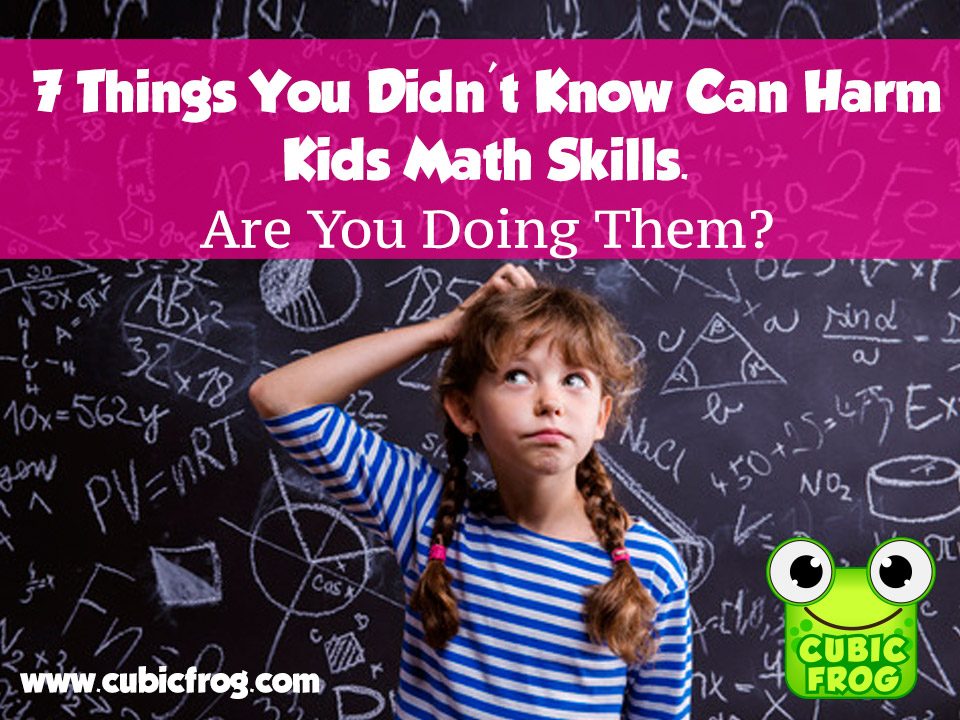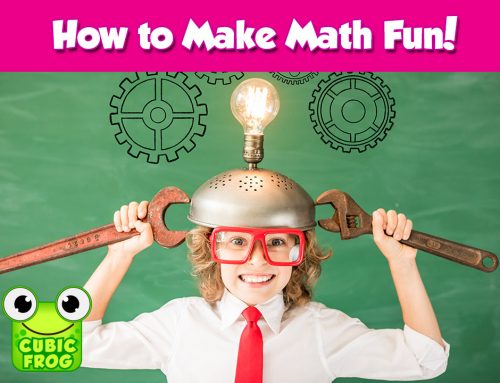Math is a problem, and we don’t just mean algebraically.
Math is a subject in our school curriculum that is continuously controversial. We are facing a major problem with young girls and kids with learning differences obtaining and enjoying math on a drastically lower level than their peers. At an early age kids are self defeated, labeled as ‘not a math person’ and shut out from an entire world of future mathematical and scientific progress.
And although is has been made clear this system of math learning is detrimental to so many of our children, there has yet to be a real revolution in the approach in which we teach both at home and in the classroom. In fact, that very same style of learning that maybe makes you say today that you’re ‘terrible with math’ is harmfully affecting your little one.
So, let take a stand. Don’t worry, it doesn’t have to be as complicated or drastic as it sounds. Because as it turns out, making math for kids more approachable and fun for everyone (you included!) is pretty simple.
Here are our 7 steps towards a healthy math future for you and your kids!
1. There is no such thing as a ‘math person’.
Everyone’s brain works differently, and ‘math thinking’ is no exception. Researchers have found that there are certain areas of the brain that are more used in traditional, number based math. Research participants were given number based math problems, told to solve them, and then their brains were scanned for activity. Participants with diagnosed learning differences were given the very same equations and were observed to use different neurological pathways when they solved the problem.
Within this discovery is our first, very important, step towards more successful math for all kids. Different does not equal bad (excuse the math pun). All participants were shown to have significant brain activity during problem solving, the only difference was where the activity took place. Hence, every person is, in fact, a math person.
2. Try a visual and/or sensory approach to math
For those students who tend to use non-traditional neurological pathways when solving math problems, working through an equation using more visual and verbal solutions has been met with astonishing success. In addition, after several weeks of using these visual and verbal math styles, the same students were re-scanned and their brains were shown to have re-wired to use the same traditional math thought pathways as their classmates.
Sensory learning is simply a learning/play style that incorporates many senses simultaneously. So instead of a pencil and paper think about colorful eggs being counted and dropped into their appropriate matching basket (for example). We’re a big believer in the fun and creativity of sensory learning, and you can find lots of sensory fun here.
3. Pump up the math self-esteem and use math positive language
It turns out one of the most important aspects of learning is self esteem. More than anything else, if a person believes they are capable of doing something, many times they can. This is because most things, math included, require multiple attempts, trying and retrying, and this can only be achieved if a person feels confident enough to do so.
At home and in the classroom it is so very important to use positive language and mannerisms while talking about and around math. Go the extra length not to undermine your own skills or get frustrated with yourself or your child; remember you are the person they most often imitate. No matter what, tell your children they are capable, great at math, and math is fun.
4. Stop asking for answers
Math is unique in that many questions are presented to have only one answer and to be solved in only one way. This can be a tough concept for children who think more non-traditionally or simply aren’t used to this type of ‘closed’ thought. Not to mention the time constraints and pressure to answer quickly. When presenting a math problem, you can talk about the problem without demanding an answer. Take away the whole ‘writing’ aspect of the equation and simply converse through the question with no pressure to write anything down.
5. Making mistakes is even more important than a correct answer
Brain scans have shown that the hippocampus (an important part of the brain which contributes to ‘learning’) actually grows when making a mistake. The neurological pathways that fire up while someone is struggling with problem-solving directly contribute to brain growth. In this way, the process of making a mistake is even more important to the brain than finding a ‘correct’ answer.
6. Don’t settle for less
Statistics show that once a child is placed in a lower math track, their self expectations and achievements are adjusted to this lower level. But, if placed with students who usually preform on a classically higher level, students tend to increase their skill level. Don’t be afraid to challenge your little one!
7. Have fun!
We believe firmly that the best way for kids to learn is through play. And that almost every lesson can be taught using creative and joyous play. The best way to make math for kids less scary is by turning it into something kids want to do. There are so many way to make math a fun activity, and if you need a little extra inspiration, we’ve got it right here!
This article is our math for kids research source and a truly great read!
What are your math for kids secrets, successes, and stresses? We wanna know![/fusion_text][/fusion_builder_column][/fusion_builder_row][/fusion_builder_container]






